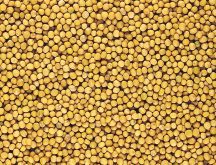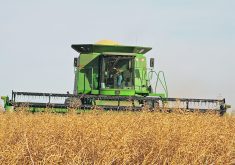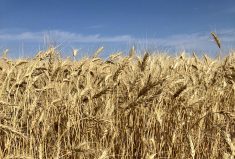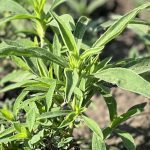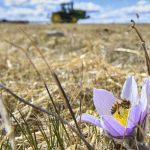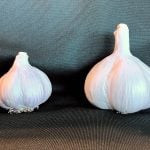CNS Canada — Canadian mustard seeds could be vying for attention this spring from some of their more lucrative rivals, the chairman of the Saskatchewan Mustard Seed Development Commission predicts.
“I would say mustard acres would be down a little bit from the previous year just based on the profit potential for other crops,” said Richard Marleau, who in addition to his duties on the board, also helps tend a farm near Aneroid in southwestern Saskatchewan.
“Lentils are looking to provide better returns right now; likely durum shouldn’t be too bad either.”
Read Also

U.S. grains: Soy futures hit June 2024 high as China ramps up buying
U.S. soybean futures climbed to the highest level since June 2024 on Monday as China’s state-owned grain trader COFCO ramped up buying following the recent Washington-Beijing trade deal, traders said.
Some farmers, he noted, may also want to use lentils and durum as swing acres if their crop needs to be rotated.
Marleau estimated roughly half a million mustard acres in Western Canada and some parts of the northern U.S., of which 80 per cent are in yellow mustard. For those numbers to remain steady, though, the precipitation that hampered much of last year’s crop needs to stay away.
“Mustard doesn’t really like wet feet. Yellow mustard really doesn’t like to have wet soil,” he said, adding humidity levels of 30 to 40 per cent would be preferable to the 60 per cent that some growers witnessed last year.
Growers in the southeast of the province also had to deal with heavy ground saturation heading into freeze-up, then coming out.
“Found a balance”
Prices are holding relatively strong with bids for yellow mustard averaging in the “low to mid-30s (cents per pound),” said Marleau. Brown mustard and oriental mustard were somewhere in the mid-20s.
While those numbers may pale in comparison to some of the heights reached a few years ago, he said they are still solid.
“There might be gold dust in the growers’ eyes if they’re looking at last year’s price for durum, but they really should be looking at forward prices,” said Marleau.
The weak Canadian dollar is helping move mustard right now, he added, with lots of opportunities on the spot market.
“I think everything has found a balance; there are still opportunities to sell and (there are) still people interested in buying,” he said.
Ukraine is generally considered to be one of Canada’s top competitors for mustard. It’s unclear, Marleau said, if the conflict between Ukraine and Russian-backed separatists in the eastern part of the country will hurt production.
“You know, I’ve asked that question as well and it seems to be OK now; we’ll see what happens next growing season.”
— Dave Sims writes for Commodity News Service Canada, a Winnipeg company specializing in grain and commodity market reporting.




